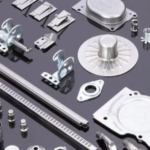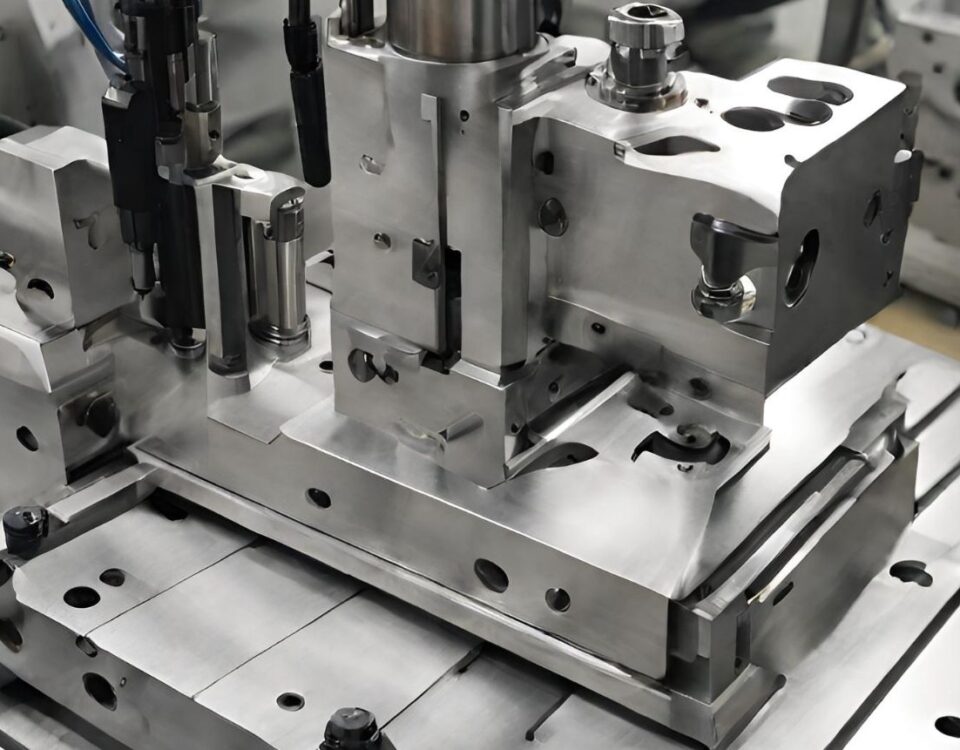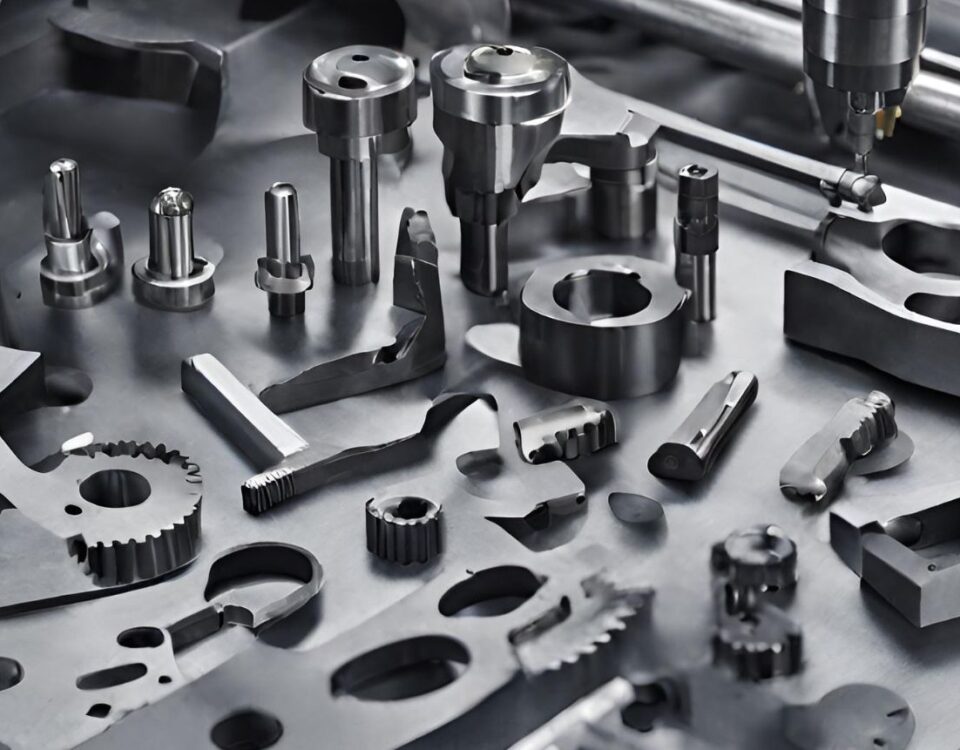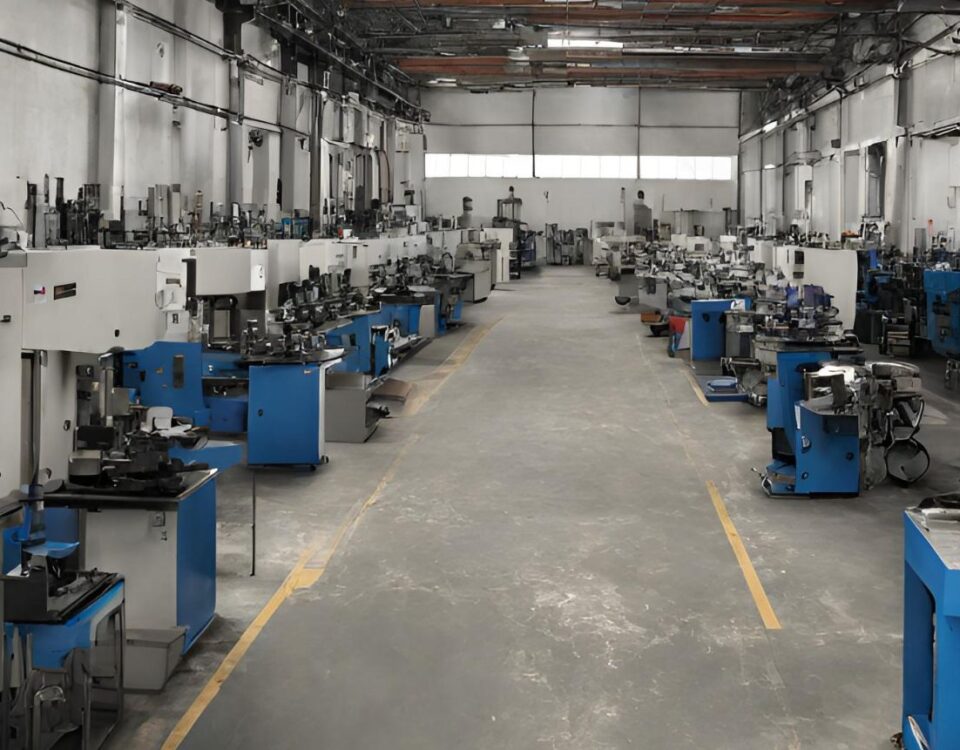
What is Custom Machining, and Its Efficiency
17 November 2023
Mastering the Art: Unveiling the Secrets of Sheet Metal Stamping
23 November 2023Introduction to 5-Axis CNC Machining Service
5-Axis CNC machining is an advanced manufacturing technique used to create intricate and complex parts with precise accuracy. Unlike traditional machining methods that operate on three axes (X, Y, and Z), 5-axis CNC machining adds two rotational axes (A and B) to allow for greater flexibility and versatility in creating complex geometries.
With 5-axis CNC machining, a computer-controlled machine tool moves along these five axes to mill, cut, or shape a workpiece from multiple angles. This enables the machine to access hard-to-reach areas and produce intricate details that would be challenging or impossible with traditional machining methods.
The benefits of 5-axis CNC machining include improved efficiency, reduced setup time, enhanced accuracy, and the ability to create complex shapes in a single setup. It enables manufacturers to produce highly precise parts in a shorter time frame, making it a preferred choice for industries such as aerospace, automotive, medical, and prototyping.
When seeking a 5-axis CNC machining service, it is essential to partner with a reputable provider that has experience in this sophisticated machining technique. They should have a skilled team of operators, advanced machinery, and a comprehensive understanding of the design and manufacturing requirements for your specific project.
By leveraging the capabilities of 5-axis CNC machining, you can achieve intricate designs, tight tolerances, and high-quality finished products that meet your exact specifications.
Advantages of 5-Axis CNC Machining
There are several advantages to using 5-axis CNC machining:
1. Increased Flexibility: 5-axis CNC machining allows for simultaneous movement along five axes, providing greater freedom and flexibility in machining complex geometries. This capability enables the machining tool to access hard-to-reach areas and machine parts from multiple angles, reducing the need for multiple setups and minimizing production time.
2. Enhanced Precision: With 5-axis CNC machining, manufacturers can achieve higher levels of precision and accuracy in their machined parts. The ability to move the tool along multiple axes simultaneously enables the production of intricate and complex shapes with tight tolerances, resulting in superior-quality finished products.
3. Reduced Setup Time: Traditional machining methods often require multiple setups and repositioning of the workpiece to access different angles. In contrast, 5-axis CNC machining reduces the need for such setup changes. This leads to significant time savings, increased productivity, and improved efficiency in the manufacturing process.
4. Improved Surface Finish: The multi-axis movement of the cutting tool in 5-axis CNC machining allows for smoother and more consistent surface finishes on the machined parts. This is particularly beneficial for industries that require high-quality surface finishes, such as aerospace, medical, and automotive.
5. Complex Part Production: 5-Axis CNC machining enables the production of complex parts in a single setup, eliminating the need for multiple machining operations and reducing the chances of errors or mismatches. This capability is especially valuable when machining intricate and custom-designed components.
6. Versatility: 5-axis CNC machines are highly versatile and can work with a wide range of materials, including metals, plastics, composites, and more. This makes them suitable for various industries and applications, from aerospace and automotive to medical and prototyping.
Overall, the advantages of 5-axis CNC machining include increased flexibility, enhanced precision, reduced setup time, improved surface finish, the ability to produce complex parts, and versatility in material compatibility. These benefits make it a preferred choice for manufacturing intricate and high-quality components.
Applications of 5-Axis CNC Machining
5-Axis CNC machining finds applications in various industries where complex and precise parts are needed. Some of the common applications include:
Aerospace Industry: 5-Axis CNC machining is extensively used in aerospace manufacturing for producing complex components like turbine blades, engine parts, structural components, and aircraft interiors. The ability to machine intricate geometries with tight tolerances makes it crucial for aerospace applications.
Automotive Industry: The automotive industry benefits from 5-Axis CNC machining for manufacturing engine components, transmission parts, molds, and prototypes. This technology enables the creation of complex shapes and contours required for high-performance engines and lightweight automotive structures.
Medical Industry: In the medical field, 5-Axis CNC machining is used to manufacture surgical instruments, implants, prosthetics, and medical device components. The precision and accuracy achieved with 5-Axis machining ensure the production of high-quality medical products with intricate geometries and tight tolerances.
Prototyping and Rapid Manufacturing: 5-Axis CNC machining is widely employed in prototyping and rapid manufacturing processes. It allows for the quick and accurate production of prototypes and functional parts, enabling design validation and testing before full-scale production.
Tool and Die Manufacturing: 5-Axis CNC machining is used in the production of molds, dies, and tooling components. The ability to machine complex contours and intricate features helps in creating precise and high-quality tooling solutions.
Energy Industry: 5-Axis CNC machining is utilized in the energy sector for manufacturing components used in power generation, oil and gas exploration, and renewable energy systems. This includes turbine parts, pumps, valves, and other critical components.
Defense and Military: The defense industry relies on 5-Axis CNC machining for producing components used in military equipment, including firearms, missile systems, aircraft parts, and armored vehicles. The precision and complexity achieved with 5-Axis machining contribute to the reliability and performance of these critical systems.
These are just a few examples of the applications of 5-Axis CNC machining. Its versatility and ability to handle complex geometries make it a valuable tool in industries that require high precision and intricate parts.
What are the 5 Axes on a CNC Machine?
On a CNC machine, the five axes refer to the different directions in which the cutting tool or workpiece can move. They are typically labeled as X, Y, Z, A, and B. Here's a breakdown of each axis:
1. X-Axis: The X-axis represents the horizontal movement of the cutting tool or workpiece from left to right or vice versa. It is typically the primary axis and determines the machine's width or travel along the horizontal plane.
2. Y-Axis: The Y-axis represents the vertical movement of the cutting tool or workpiece, typically from front to back or vice versa. It determines the machine's depth or travel along the vertical plane.
3. Z-Axis: The Z-axis represents the vertical movement of the cutting tool or workpiece, typically up and down. It determines the machine's height or travel along the vertical plane.
4. A-Axis: The A-axis is one of the rotational axes and allows the cutting tool or workpiece to rotate around the X-axis. It enables the machining of angled features or contours.
5. B-Axis: The B-axis is the other rotational axis and allows the cutting tool or workpiece to rotate around the Y-axis. It enables the machining of angled features or contours.
By combining the linear movement along the X, Y, and Z axes with the rotational movement along the A and B axes, 5-axis CNC machines can achieve complex and precise machining operations from multiple angles, resulting in more intricate and versatile part production.
When Does 5-Axis Machining Make Sense?
Up to five faces of a part can be machined in a single operation because of the additional axes. These characteristics greatly increase the process' accuracy and efficiency. These factors make 5-axis machines perfect for parts with intricate geometries and complicated movements that would otherwise need numerous setups. 5-axis machining is becoming a more popular choice for CNC manufacturing as part designers produce increasingly complex parts that need to be machined on at least five different faces.
Five-axis CNC machining, as opposed to traditional three-axis machining, enables the workpiece to be machined on five axes as opposed to just three. For parts with more intricate designs, 5-axis machining works better even though traditional 3-axis machining is still adaptable and helpful in some situations. Nevertheless, in terms of cost, 3-axis machines might be the best choice if only one flat surface needs to be cut. Additionally, the expense of hiring professional CNC programmers is eliminated because 3-axis machines are simpler to program.
Conclusion
5-Axis CNC machining service offers significant advantages in terms of its ability to handle complex part geometries, achieve high precision, reduce setup time, and increase overall efficiency. By providing simultaneous multi-axis movement, it enables the production of intricate shapes, contours, and freeform surfaces that are challenging to achieve with traditional machining methods.
The versatility of 5-Axis machining makes it suitable for various industries such as aerospace, automotive, medical, prototyping, and tool and die manufacturing. It plays a crucial role in manufacturing critical components including turbine blades, engine parts, surgical instruments, molds, and prototypes.
With 5-Axis machining, manufacturers can streamline production processes, reduce the number of setups required, and improve accuracy and repeatability. This technology allows for efficient prototyping, faster iteration, and validation of designs, leading to shorter development cycles.
Overall, 5-Axis CNC machining service offers a valuable solution for industries and applications that demand complex and precise parts. Its ability to handle intricate geometries, achieve tight tolerances, and provide efficient production makes it an essential tool in modern manufacturing.




